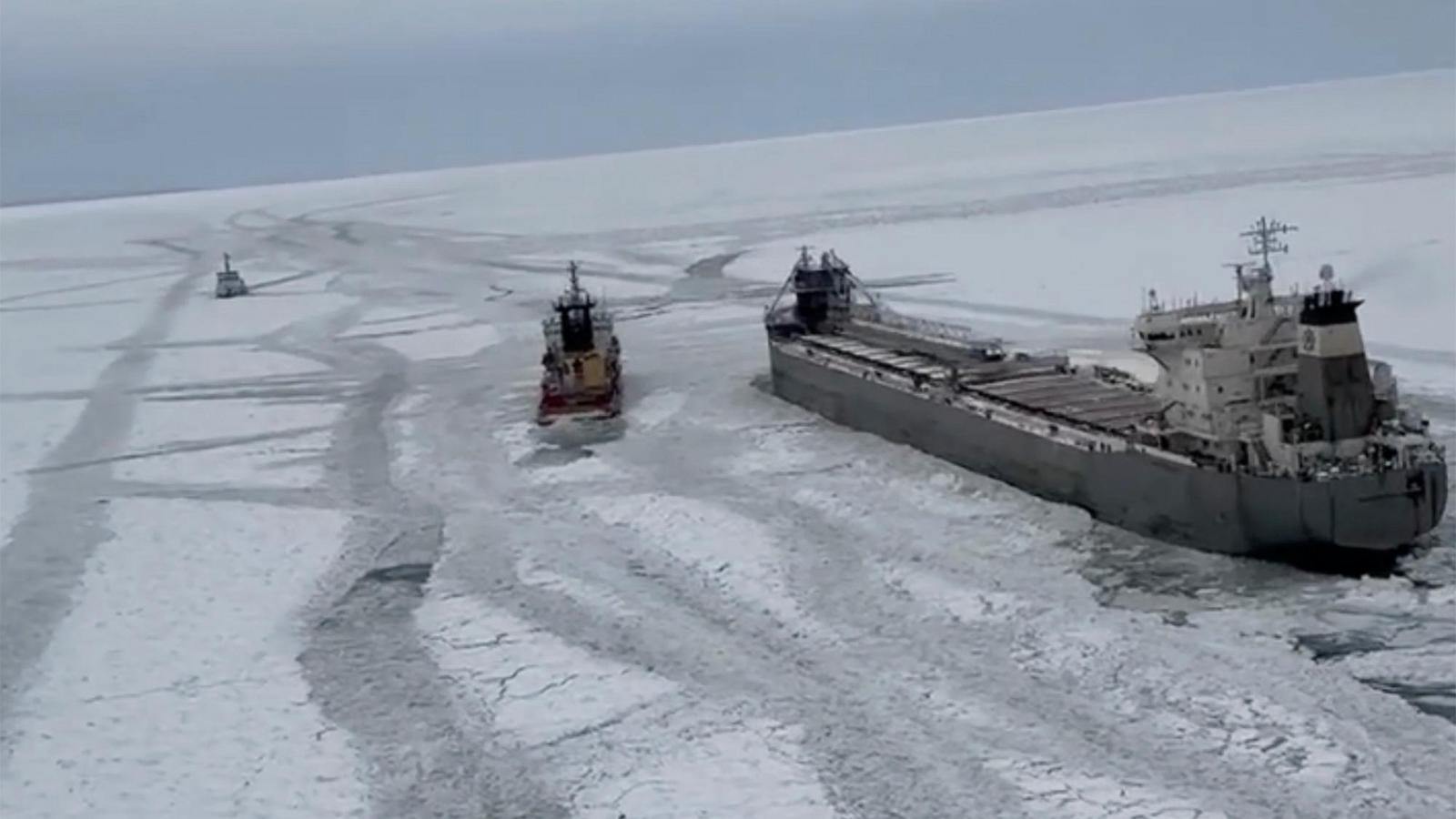Great Lakes Freighter Trapped in Ice: A Nail-Biting Rescue Mission
Imagine this: A massive 663-foot freighter, the Manitoulin, carrying 17 souls, becomes trapped in the icy clutches of Lake Erie. Sounds like a scene from a disaster movie, right? Well, this real-life drama unfolded recently, leaving onlookers on the edge of their seats and highlighting the incredible challenges faced by those who navigate the Great Lakes during the harsh winter months. This gripping tale of survival and the heroic efforts of the U.S. and Canadian Coast Guards is one you won't want to miss.
The Manitoulin's Frozen Fate
The Manitoulin, a Canadian vessel, found itself in a precarious situation after delivering a cargo of wheat in Buffalo, New York. As it began its journey back to Canada, the ship encountered an unexpected foe: thick, impenetrable ice. Unlike previous instances where ships have managed to break through surface ice, the Manitoulin became completely stuck. The crew, thankfully unharmed and safe within the vessel, faced an anxious wait for assistance. This incident serves as a potent reminder of the unpredictable nature of the Great Lakes in winter. These large, seemingly docile bodies of water can quickly transform into treacherous ice-bound mazes.
A Joint Rescue Operation Underway
Thankfully, help arrived swiftly! The U.S. Coast Guard sprang into action, deploying an icebreaker to the scene to free the trapped ship. The determination to ensure the safe return of the 17 crew members fueled this intense rescue effort. Joining forces with their Canadian counterparts, who dispatched their own icebreaker to the Manitoulin’s location, the combined might of both coast guards was quickly brought to bear against the seemingly invincible icy grip holding the vessel captive.
Adding another layer of complexity to this rescue operation, a U.S. Coast Guard helicopter patrolled the skies, continuously monitoring the scene to ensure the ice conditions remained under observation and that the rescue mission remained well-coordinated. This is more than just a rescue mission; it is a test of international cooperation and resilience, making for an intriguing spectacle of teamwork in action against the unforgiving elements.
Icebreakers V Ice: A Battle for the Ages
The battle between the powerful icebreakers and the stubborn ice was an epic struggle played out in the frigid waters of Lake Erie. The icebreakers, impressive machines of nature's conquest, relentlessly attacked the thick ice sheets. Their formidable might was matched by the persistent severity of the unrelenting winter conditions, a fierce opponent indeed. Pictures and videos circulating across social media captured this amazing confrontation; a stunning visual representation of man versus nature. The sight serves as a powerful reminder of the extreme environmental factors that can swiftly impact daily activities in areas like the Great Lakes. For days the relentless efforts continued, and people around the globe followed this edge-of-your-seat drama.
Lessons from the Manitoulin's ordeal
The Manitoulin incident serves as an important reminder of the unpredictable conditions in the Great Lakes during the winter. It's not merely a seasonal event; but rather a testament to the need for constant preparedness and innovation. Shipping companies operating on the Great Lakes must implement rigorous safety standards. Regular updates and coordination between U.S. and Canadian Coast Guard organizations, as showcased in this instance, prove their absolute importance to the success of maritime activities during treacherous ice conditions. The collaborative response to this situation reinforces the significance of cross-border collaboration in such hazardous situations.
Take Away Points
- The Manitoulin incident highlighted the challenges of winter navigation on the Great Lakes.
- The joint efforts of the U.S. and Canadian Coast Guards demonstrated the importance of international cooperation in maritime rescue operations.
- The event underscores the need for robust safety protocols in Great Lakes shipping during the winter months.




